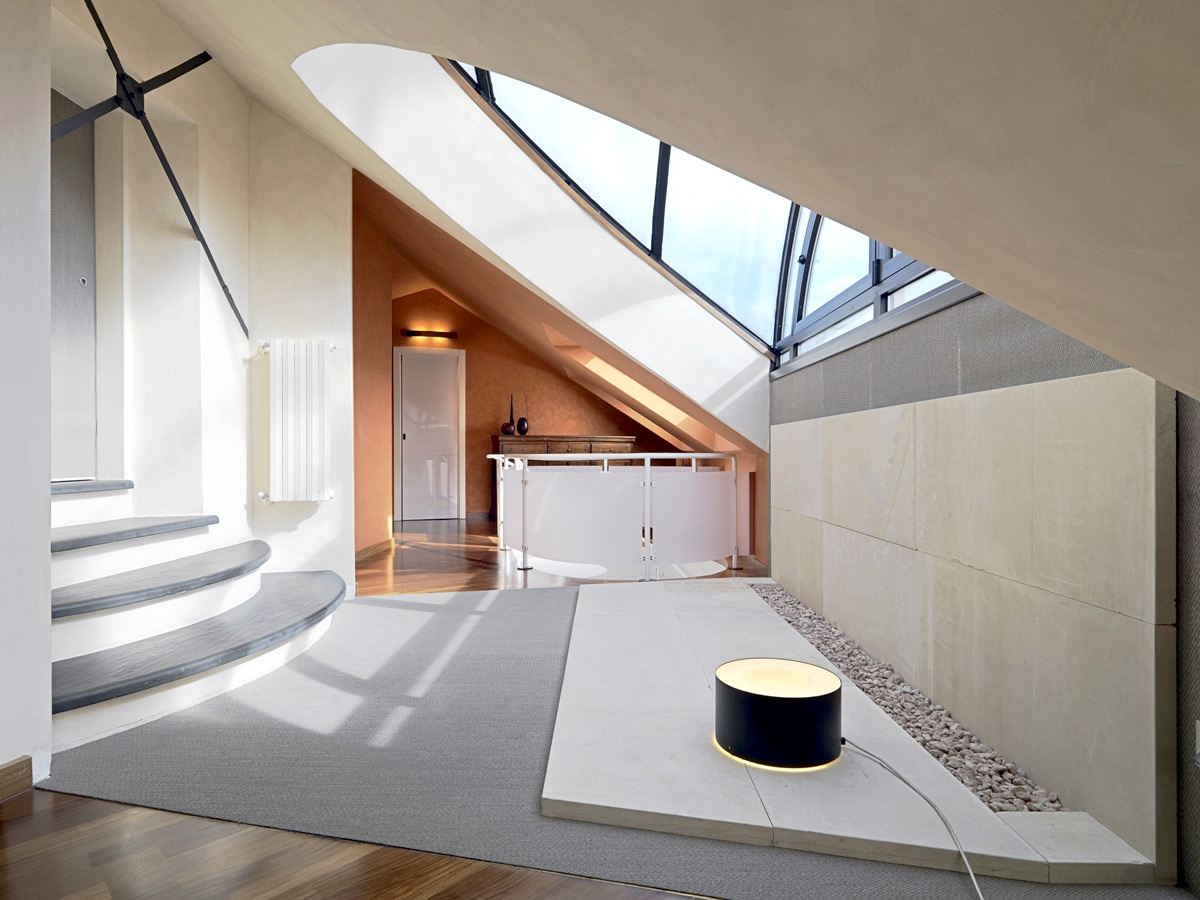Often referred to as roof lights, skylights can truly transform your home’s feel by offering an abundance of natural light. In this article, we will go over the types of skylights, benefits, costs, sizes and reasons why you should invest in skylights.
What Are Skylights?
Much like windows on the side of a home, a skylight will transmit light into your home from above. A skylight will open from the ceiling through the roof, allowing natural light to enter the home. This opening can be covered with a translucent and transparent material to release natural light into a room. If you are looking to maximize the amount of light in the home, installing skylights is the best way to go.
Types Of Skylights
Let’s look at the differences and similarities of these skylights below!
Barrel Vault Skylight
Barrel vault skylights fill practical and economic means of bestowing daylight throughout a large interior space, such as an auditorium. They are commonly used as entrance or walkway canopies between buildings. Typically, over 80 percent of the roof will be covered by this skylight. You will most likely find these skylights over passageways, parking shelters, arcades, medical and educational institutions.
Fixed Skylight
Fixed skylights are another popular option for both home and business owners. Just as the name would indicate, fixed skylights do not open for air ventilation. Essentially, these skylights are completely sealed to the roof. Fixed skylights are used in low-lit areas, such as the attic or stairwell. Glass makes up the majority of the skylight, with the frame typically made of aluminum, timber or steel.
Ventilated Skylight
Ventilated skylights are much different from most skylight models because they serve multiple purposes. These skylights work as a source of ventilation of both light and air. Ventilated skylights are ideal for bathroom and kitchen areas, as they will remove excess moisture while keeping a constant flow of fresh air throughout the room. Installing a ventilated skylight is similar to adding a new window to your home.
Custom Skylight
Custom skylights are very popular for commercial buildings. These large skylights can open up to the sun and air, illuminating a large interior space. They are uniquely designed to let in a large amount of light throughout the day. Custom skylights are the choice when roof conditions do not allow the installation of most other popular skylight models. This skylight is one of the most aesthetically-pleasing versions. They can come in a variety of shapes and sizes, depending on the roofing system of the building.
Ridge Skylight
Ridge skylights are applicable to conditions where the skylight essentially lies on the same plane as the roof pitch. The ridge of the skylight will also follow the line of the roof ridge. These skylights can be mounted on curbs of flat roofs, complete with a wide range of pitch options and glazed vertical ends. These can be attached to head-to-head vertical walls at both ends, if desired. Comparable to the size of a standard window, ridge skylights let in a considerable amount of light.
Pyramid Skylight
These models are usually mounted on the curbs of flat roofs and they come with several pitch or slope options. As the name suggests, these skylights make the shape of a pyramid, having four sides. Pyramid skylights are sometimes referred to as hip ridge skylights. The other type of skylight in this category is the multi-sided pyramid skylights (polygon skylights). These can be built with six to eight sided openings. They can also be constructed with multi-sided openings.
Curb-Mounted Skylight
Since curb-mounted skylights are very affordable and work well in any setting, they are some of the most common skylights today. Curbs are either built on-site or can be pre-built by a manufacturer. This skylight needs to be double-walled and insulated to retain heat inside the home. Curb-mounted skylights are great at protecting against leaks. They also allow for more flexibility and size, even though this is the simplest skylight design.
Dome Shaped Skylight
Made up of flexible plastics, dome-shaped skylights come in the form of a dome and can evenly disperse sunlight throughout a room. This skylight will illuminate an entire room with small streams of light. Dome skylights come in two layers for both insulation and protection, including a thick outside layer and a thin inside layer. These skylights are suitable for both home and commercial settings.
Tubular Skylight
The reasons to invest in tubular skylights are obvious, especially for homeowners. These lights have been proven to provide sunlight and vitamin D, a valuable resource for children. Increased sunlight has been linked to improved test scores for children of all ages. Not only will skylights bring natural light inside, they will help you save on electric bills for the long term. Homeowners often experience saving between 15-40% off energy bills. Skylights also provide UV protection against fading clothes, furniture and rugs.
Skylight Pros And Cons
Here are a few benefits and drawbacks to installing skylights: Skylight Pros:
- Best direct view of the sky.
- Can be opened, if needed.
- Adds natural light to the home.
- Save money on energy use.
Skylight Cons:
- Increased heat gain.
- Can fade fabrics or clothing.
- More expensive to install and maintain.
- Leaks can occur due to improper installation.
Average Skylight Sizes
On average, standard dome skylights are sized between 4-18 inches. Rectangular fixed or vented skylights complete with flat tempered glass can vary in size, from 14-72 inches in width and 16-96 inches in length. Since skylight sizes can vary widely from 4 all the way to 96 inches, these domes can weigh anywhere between 60-150 pounds. The glass thickness will change depending on the type of skylight selected, but, in general, the bigger the skylight the thicker the glass. Ideally, home and business owners will have two tempered glass panes, designed to perform with a higher energy efficiency. Two-tempered glass panes are typically 1″ in thickness, according to SigSkylights. There are many reasons why knowing the standard sizing of skylights is important. You may have an older home you are looking to update or simply starting a DIY project for your modern home. Another thing to consider with skylights is the maximum pitch restriction. Some select skylights are designed to allow for a nearly vertical pitch while other models are limited between a 45-90-degree pitch. Elite Home Daylighting Systems can install the following sizes:
- 6 inches (75 sq. ft.)
- 10 inches (150 sq. ft.)
- 13 inches (250 sq. ft.)
- 18 inches (500 sq. ft.)
*Contact Elite Home Daylighting Systems right here for more information!
How Much Does Skylight Installation Cost?
On average, skylight installation cost around $2,250. Subject to the size and location, a professional will charge you between $500 to $4,000 for installation and labor. Where your total comes to that range depends on roof pitch, ceiling height, and the room itself. Labor prices are directly associated to the size of the window. You might only need to pay $500 for the cutting of a 16″ x 16″ hole in your roof, however, a 48″ x 48″ hole is going to range up to $4,000. The appropriate size depends on more than just the expense. If you opt for the wrong size, it might be too small and fails at letting in natural light. For instance, a 16″ x 16″ opening might not be adequate to let in light into a large, open space living space. If it’s too big, air could leak out, or water may leak in. Information is vital for the installation. The opening in the roof and ceiling has to be precisely lined up. When that doesn’t occur, the skylight is not going to fit into the opening. Correcting that mistake is going to require more time and expense. Vented skylights that have a remote control might require electrical installations that may range from $75 to $300. The cost of hiring an electrician should be included in your overall budget since most installers are not going to lay wire. They usually recommend a licensed professional experienced in electrical work.
Why Install Tubular Skylights?
Here are just a few of the benefits associated with installing tubular skylights:
- Save money on electricity.
- Natural source of daylight without any added heat or glare.
- Generally no repairs or maintenance needed.
- Won’t fade furniture or clothing.
- Save on installation costs compared to traditional skylights.
- Eligible to receive federal tax credits which will lower installation costs.
- No loss of cooling or heating energy.
- Leak and damage proof design.
- Will not build water condensation over time.
- Built for extreme Arizona conditions and temperatures.
- Preferred upgrade for realtors – will add to your home’s value.
Skylight Installation In The East Valley
Elite Home Daylighting Systems offers tubular skylights and solar attic fan installation services to the entire Phoenix east valley. Service area includes Chandler, Gilbert, Mesa, Tempe & more! Contact us for a free quote today!
More Articles About Solar Tubes
- Why Go Solar In Arizona?
- How To Remove A Skylight
- Best Skylight Ideas For Your Home
- Roof Window Vs Skylight
- Solar Attic Fan Installation Cost
- 5 Benefits Of Sunlight Through Windows
- How Much Does It Cost To Install A Skylight?
- Sun Tunnel Vs Skylight
- Skylight Dome Replacement Guide
- Skylights Replacement Cost
- Skylights Near Me In East Valley Phoenix
- How Long Do Skylights Last
- Do Solar Attic Fans Work
- How To Clean Skylights In 5 Steps
- Everything You Need To Know About Solar Fans
- How To Install Solar Attic Fan
- Skylights Vs Solar Tubes: Costs, Pros And Cons
- How Much Do Solar Tubes Cost?
- 6 Easy Ways To Lower Your Electric Bill In Arizona
- Solar Attic Fans Pros And Cons
- Tubular Skylights Pros And Cons




